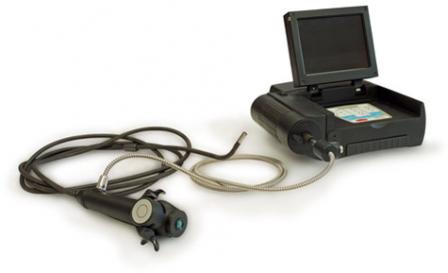Substitutes in Sterilants
Sterilants kill microorganisms on medical equipment and devices. SNAP reviews alternatives used for sterilizing temperature- and moisture-sensitive medical devices and supplies (e.g., endoscopes), which historically used blends of 88 percent CFC-12 and 12 percent ethylene oxide (i.e., “12/88”). In this non-flammable blend, ethylene oxide ("EtO") sterilizes the equipment and CFC-12 is a diluent solvent.
Lists of acceptable![]() acceptableThis designation means that a substitute may be used, without restriction, to replace the relevant ODS within the end-use specified. For example, HCFC-22 is an acceptable substitute for R-502 in industrial process refrigeration. Note that all SNAP determinations apply to the use of a specific product as a substitute for a specific ODS in a specific end-use. and Unacceptable
acceptableThis designation means that a substitute may be used, without restriction, to replace the relevant ODS within the end-use specified. For example, HCFC-22 is an acceptable substitute for R-502 in industrial process refrigeration. Note that all SNAP determinations apply to the use of a specific product as a substitute for a specific ODS in a specific end-use. and Unacceptable![]() UnacceptableThis designation means that it is illegal to use a product as a substitute for an ODS in a specific end-use. For example, HCFC-141b is an unacceptable substitute for CFC-11 in building chillers. Note that all SNAP determinations apply to the use of a specific product as a substitute for a specific ODS in a specific end-use. substitutes are updated several times each year. The list of substitutes is shown below.
UnacceptableThis designation means that it is illegal to use a product as a substitute for an ODS in a specific end-use. For example, HCFC-141b is an unacceptable substitute for CFC-11 in building chillers. Note that all SNAP determinations apply to the use of a specific product as a substitute for a specific ODS in a specific end-use. substitutes are updated several times each year. The list of substitutes is shown below.
Note: SNAP-related information published in the Federal Register takes precedence over all information on this page.
| Substitute | Trade Name(s) | ODP |
GWP |
Flamable | SNAP Listing Date | Listing Status | Further Information |
|---|---|---|---|---|---|---|---|
| HCFC Blend/A/EtO | 0 | 9,000 | no | August 26, 1994 | Acceptable | This blend contains HCFC-124, an ozone depleting substance; it should be use to sterilize only equipment that cannot be sterilized using other alternatives such as steam or CO2/EtO blends. As a HAP, use of EtO must comply with Title III of the CAA. This agent is FIFRA Registered. | |
| Blends containing HCFC-22 | >0 | N/A | no | July 20, 2015 | Unacceptable as of September 18, 2015 | ||
| CO2/EtO | 0 | 1 | no | March 18, 1994; June 16, 2010 |
Acceptable | CO2/EtO blends can serve as drop-in replacements to 12/88 in some but not in all existing equipment because they require a higher operating pressure. As a HAP, use of EtO must comply with Title III of the CAA. This agent is FIFRA registered. | |
| HCFC-124 / EtO | 0.022 | 609 | no | March 18, 1994 | Acceptable | HCFC-124 is an ozone depleting substance; it should be used to sterilize only equipment that cannot be sterilized using other alternatives such as steam or CO2/EtO blends. As a HAP, use of EtO must comply with Title III of the CAA. This agent is FIFRA registered. | |
| Hydrogen Peroxide Gas Plasma Systems | 0 | N/A | no | July 28, 1995; June 16, 2010 |
Acceptable | ||
| CF3I/CO2/EtO Blend 1 | IoGasTM Sterilant Blend 1 | <0.001 | <1 | no | October 1, 2004 | Acceptable | As a HAP, use of EtO must comply with Title III of the CAA. FIFRA registration of this agent is pending. |
| CF3I/CO2/EtO Blend 3 | IoGasTM Sterilant Blend 3 | <0.001 | <1 | no | October 1, 2004 | Acceptable | As a HAP, use of EtO must comply with Title III of the CAA. FIFRA registration of this agent is pending. |
| CF3I/CO2/EtO Blend 6 | IoGasTM Sterilant Blend 6 | <0.001 | <1 | no | October 1, 2004 | Acceptable | As a HAP, use of EtO must comply with Title III of the CAA. FIFRA registration of this agent is pending. |
| Peroxyacetic Acid/Hydrogen Peroxide Gas Plasma Systems | 0 | N/A | yes | July 28, 1995; June 16, 2010 |
Acceptable | This agent is FIFRA registered. | |
| Pure EtO | 0 | 1 | yes | March 18, 1994; June 16, 2010 |
Acceptable | EtO is a toxic, carcinogenic substance and is considered a hazardous air pollutant. Potential exposures of the general population to EtO releases can be limited either through the use of catalytic converters which convert waste EtO into CO2 and water, or through the use of acid water scrubbers which convert waste EtO into ethylene glycol. Must be used in accordance with manufacturer recommendations to address flammability concerns. Must be used in accordance with OSHA standards to limit occupational exposures. As a HAP, use of EtO must comply with Title III of the CAA. | |
| Steam | 0 | N/A | no | March 18, 1994; June 16, 2010 |
Acceptable | Applicable only to devices resistant to heat and moisture. | |
| The Mini-Max Cleaner® | The Mini-Max Cleaner® | 0 | N/A | no | September 28, 2006 | Acceptable |

